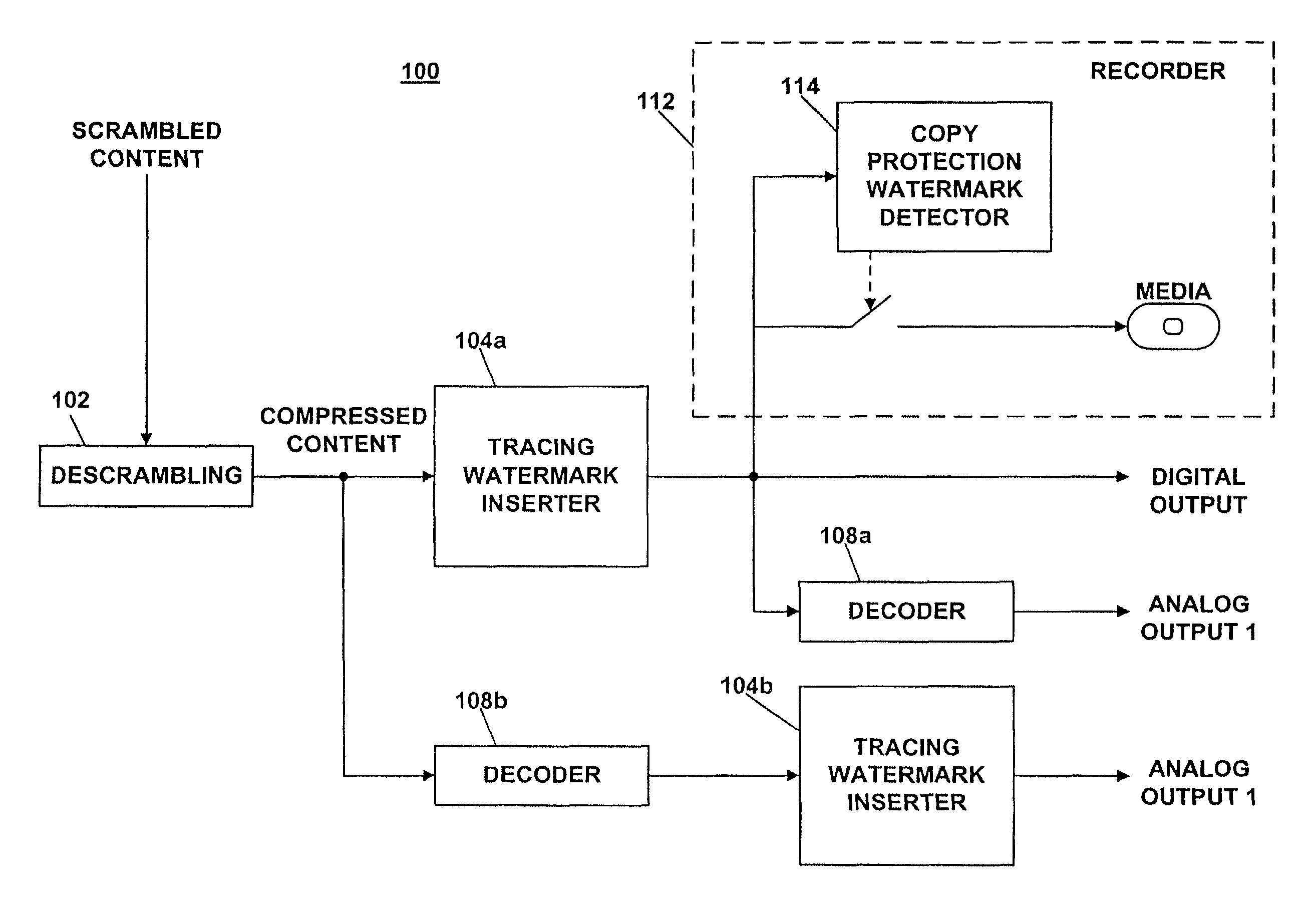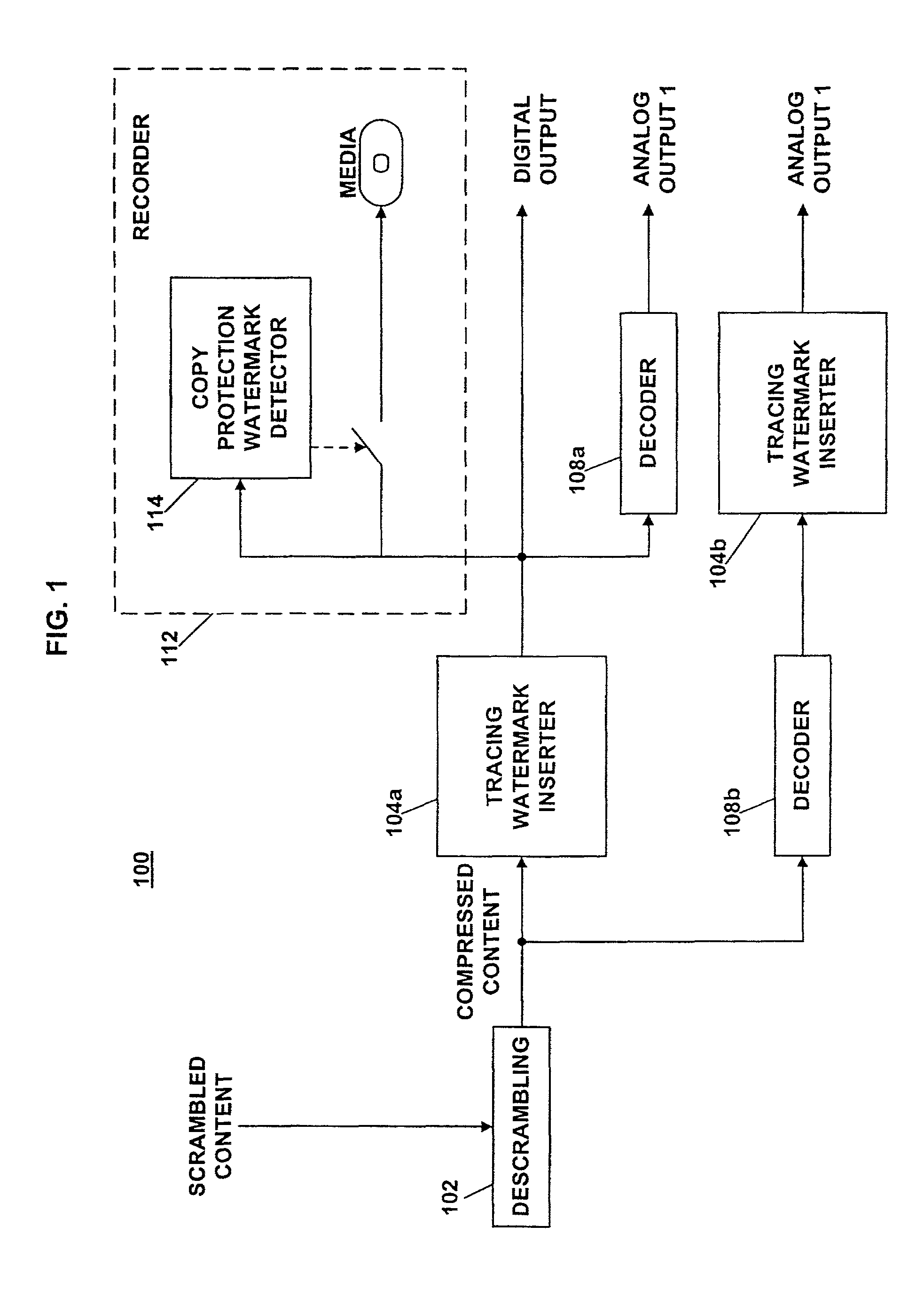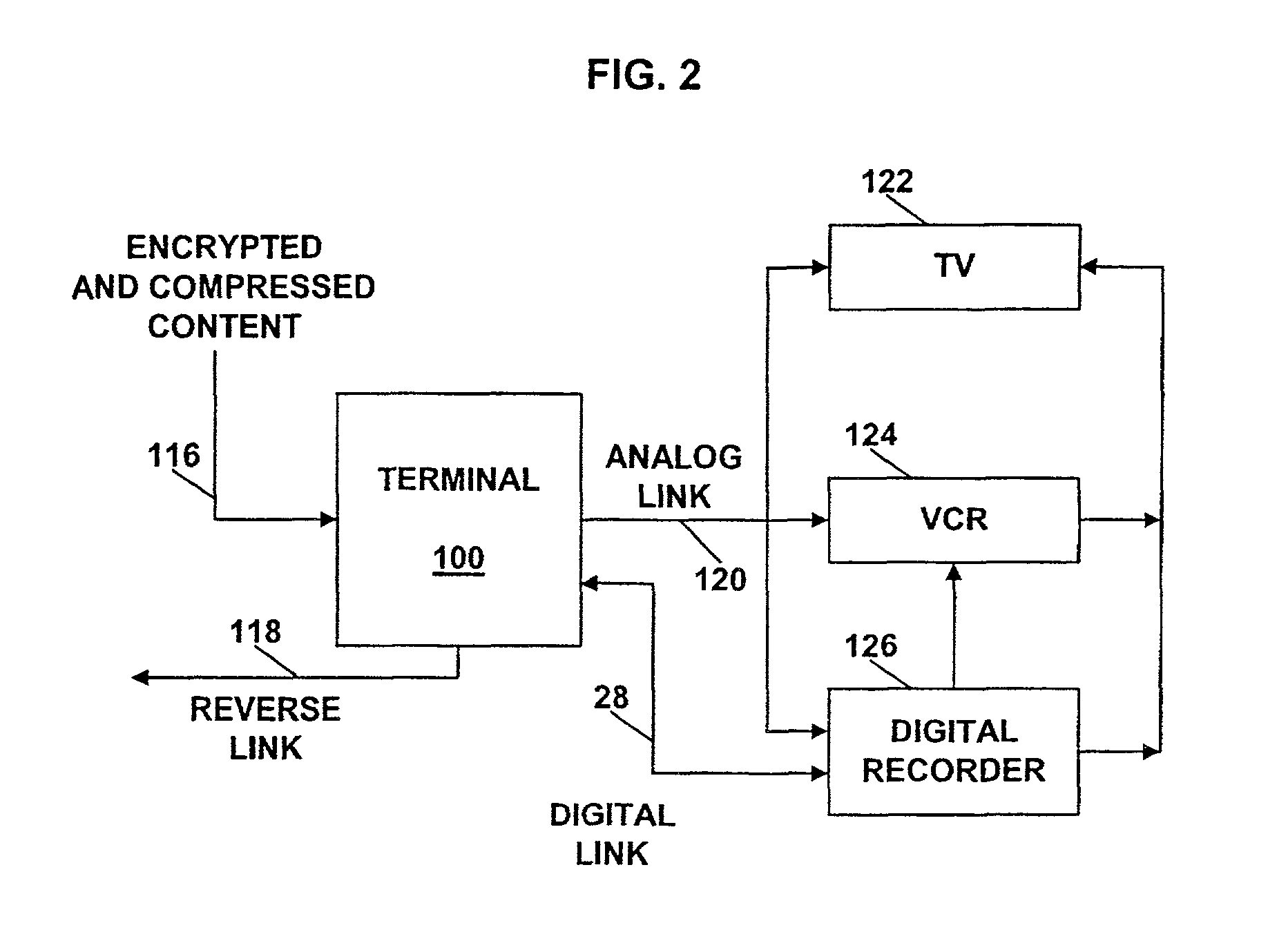Watermarking system and methodology for digital multimedia content
- Summary
- Abstract
- Description
- Claims
- Application Information
AI Technical Summary
Benefits of technology
Problems solved by technology
Method used
Image
Examples
Embodiment Construction
[0038]Proposed image and video watermarking techniques can be divided into categories baed upon the domain in which they operate: spatial domain, or transform domain. Spatial domain techniques immerse the watermark into uncompressed video data, e.g., by directly modifying pixel values. The uncompressed video may be video that has not been compressed or video that has been obtained by decompressing a compressed video. Transform domain techniques compute a transformation (like the FFT, DCT, or wavelet transforms) of part of the video, insert the watermark by modifying the coefficient values, and compute the inverse transform to obtain the watermarked video.
[0039]The complexity of spatial domain techniques can be moderate. For example, suppose the watermark is a noise-like pseudo-random sequence that is added to the luminance pixel values comprising a video. A hardware implementation of a pseudo-random generator requires only a few gates and a software implementation is not computation...
PUM
 Login to View More
Login to View More Abstract
Description
Claims
Application Information
 Login to View More
Login to View More - R&D
- Intellectual Property
- Life Sciences
- Materials
- Tech Scout
- Unparalleled Data Quality
- Higher Quality Content
- 60% Fewer Hallucinations
Browse by: Latest US Patents, China's latest patents, Technical Efficacy Thesaurus, Application Domain, Technology Topic, Popular Technical Reports.
© 2025 PatSnap. All rights reserved.Legal|Privacy policy|Modern Slavery Act Transparency Statement|Sitemap|About US| Contact US: help@patsnap.com



